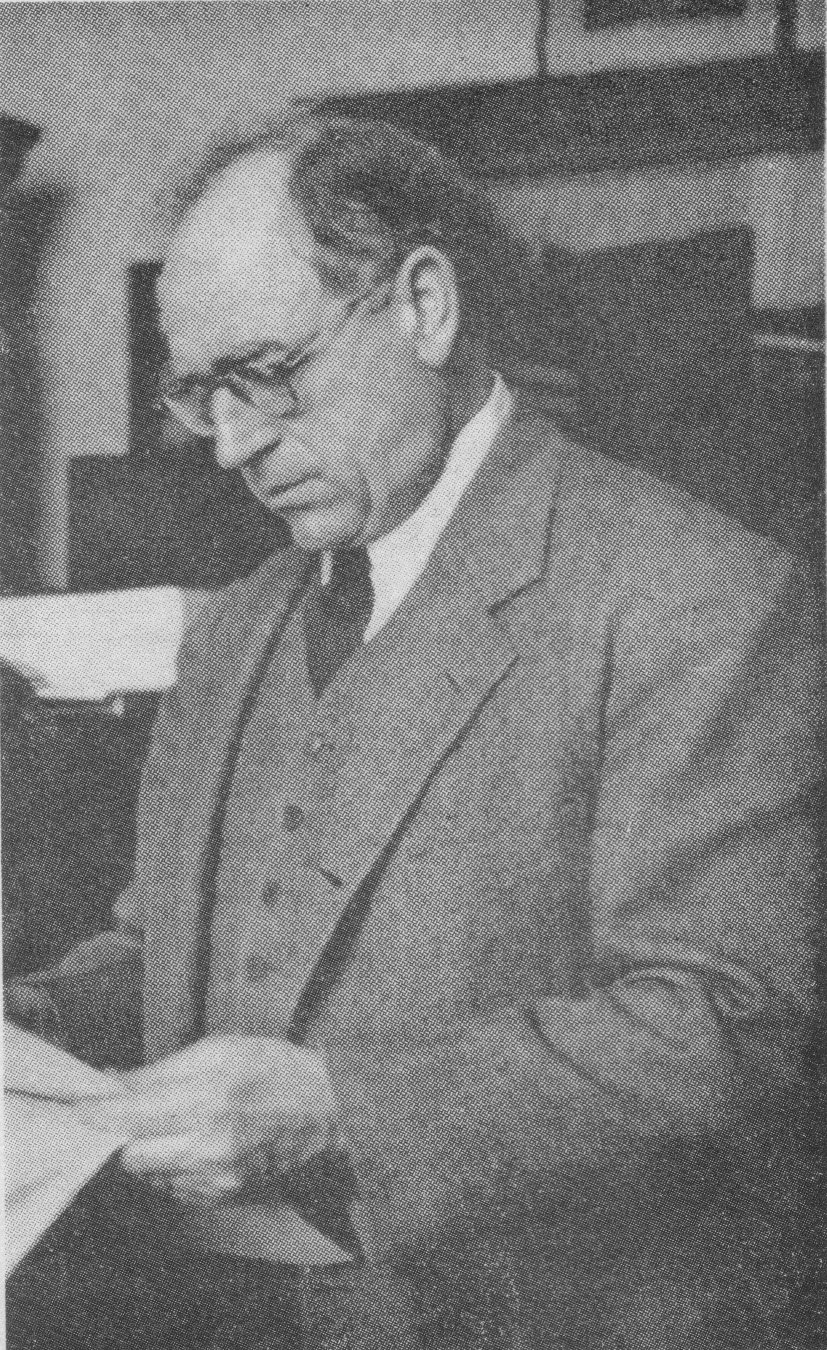Karl N. Llewellyn, Assistant Professor of Law, 1919-20, 1922-25
Karl N. Llewellyn
REFERENCES:
Brian Leiter, “Karl Nickerson Llewellyn,” in Neil J. Smelser & Paul B. Baltes, eds., International Encyclopedia of the Social and Behavioral Sciences 8999 (2001).
Alan Schwartz, “Karl Llewellyn and the Origins of Contract Theory,” in Jody S. Kraus & Steven D. Walt, eds., The Jurisprudential Foundations of Corporate and Commercial Law (2000).
Karl Nickerson Llewellyn (1893-1962) enrolled in the Law School after being wounded while serving as a volunteer in the German army in World War I. He was Editor-in-chief of the Law Journal 1918-19. After graduating in 1918 and receiving an advanced law degree (J.D.) in 1920, serving as an instructor at the Law School during his graduate study, Llewellyn returned to Yale in 1922 as a member of the faculty. He left Yale for Columbia after only three years, but his early Legal Realist work was to inform the rest of his career, particularly his contributions to the drafting of the Uniform Commercial Code.
With the possible exception of Jerome Frank, Llewellyn was the most prominent and important of the Yale Legal Realists of the 1920s and 1930s. While Frank argued that legal decisions were dependent upon the mood and personality of the jurist—and thus were inherently unpredictable—Llewellyn argued that judicial decisions fell into predictable patterns, but that the patterns could not be predicted solely by examining the declared rules of decision. Llewellyn maintained that judges often applied social norms, and in particular—in commercial law cases—norms of commercial behavior. Llewellyn was later to apply this insight to his foundational work on the Uniform Commercial Code, which instructed judges to require “good faith” and “reasonableness,” which often meant enforcing the relevant industry norms. Insofar as industry norms are geared toward increasing economic efficiency, Llewellyn’s ideas have been characterized as anticipating the efficiency analysis of the Law and Economics movement.
